By Jaleen Grove
When Cahén began illustrating in Canada in 1941, conditions favoured innovation because not only was the Second World War upsetting norms and creating new opportunities in poster design, animation and other communication arts, it was giving Canada a new sense of itself as a nation, rather than as a British colony.
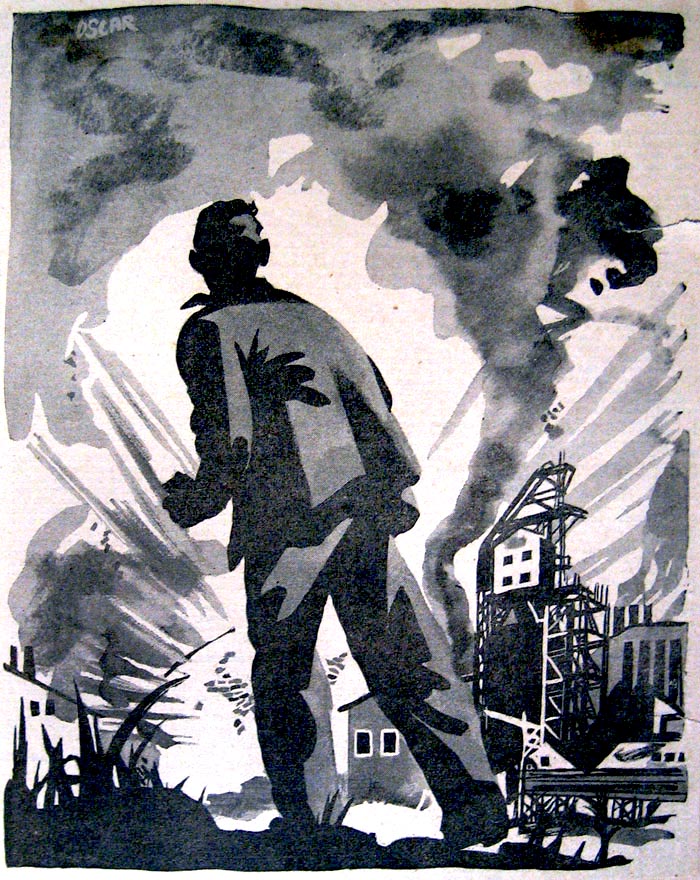
We don’t know where either of these images appeared. If you do, contact The Cahén Archives.
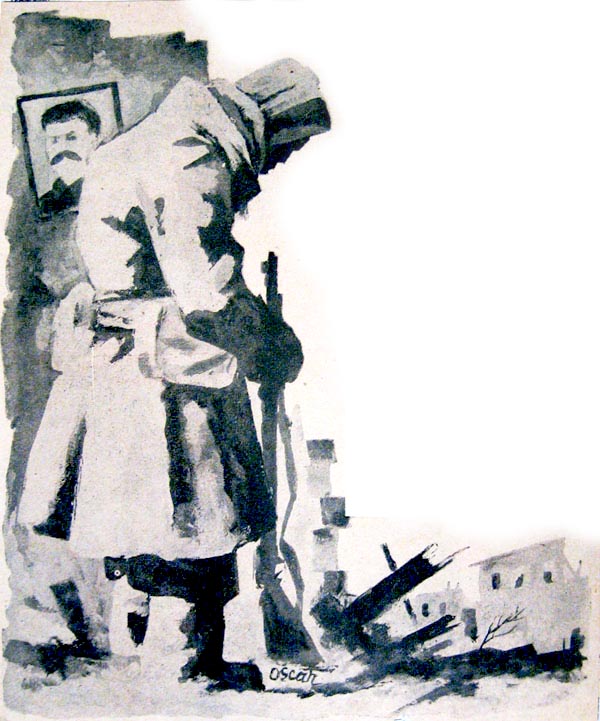
One of Cahén’s first art directors, Ben Turner of the Standard, gave Cahén many depressing subjects. Crayoned staring figures appear in a series by Cahén soliciting aid for Greece, dated 1943. Cahén executed these after his release from Sherbrooke internment camp in 1943, while in the employ of Rapid, Grip and Batten. This long-time art studio in Toronto is best known for having employed Canada’s Group of Seven members some twenty-five years earlier

In his scrapbook of samples, under some caricatures of Hitler, Mussolini, and Heinrich Himmler, Cahén penciled the words, “Based on Szik [sic].”
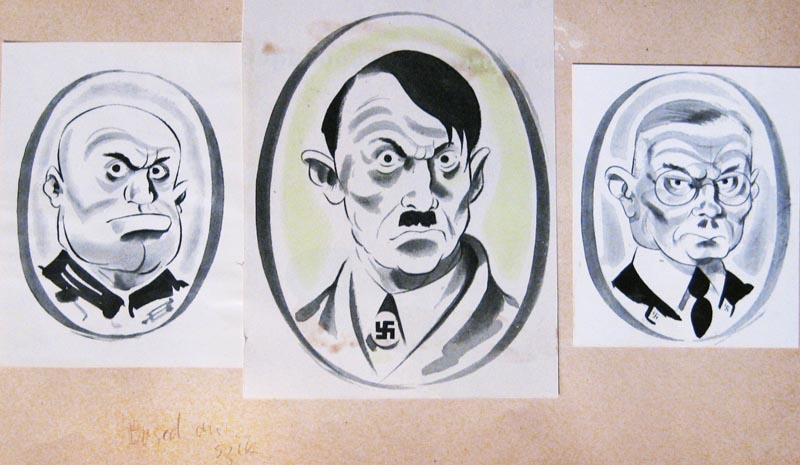 We don’t know where these images appeared. If you do, contact The Cahén Archives.
We don’t know where these images appeared. If you do, contact The Cahén Archives.Arthur Szyk was a Jewish American whose highly polished caricatures of the enemy were frequently seen on the cover of Colliers magazine. Szyk’s influence on Cahén also came out in a later illustration that reflects the bias of the Cold War years against Russians: “The Bolshevik and the Wicked Witch,” of slovenly Communists carousing. The orange and brown palette is very similar to Szyk’s and quite unlike most of Cahén’s other colour work, while the caricatured features, fine if loosely rendered detail, and reference to a medieval banquet depicted flatly with a lack of perspective has an affinity to Szyk’s predilection for illuminated manuscripts and rapier graphic wit.

In another approach Cahén developed for war subjects, scenes and figures are described with a calligraphic use of brush and ink that owes something to Rico Lebrun and Milton Caniff (both of whom he admired), a technique that recurs throughout his advertising and painting careers. Particularly impressive was a series for John Hersey’s famous book Hiroshima.
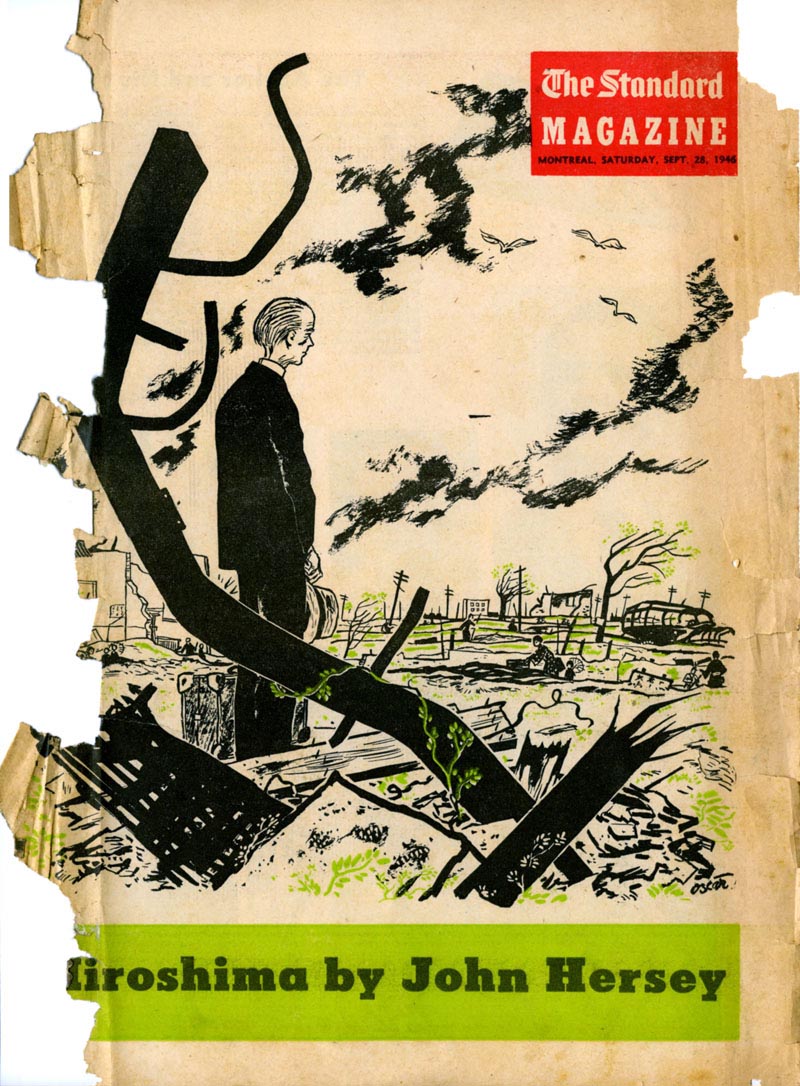
In a relief drive ad for China captioned “Objective $1,000,000 Objectif,” an important motif for Cahén appears: a broken tree. The tree trunk shattered by the violence of war was a common sight in war-torn Europe.
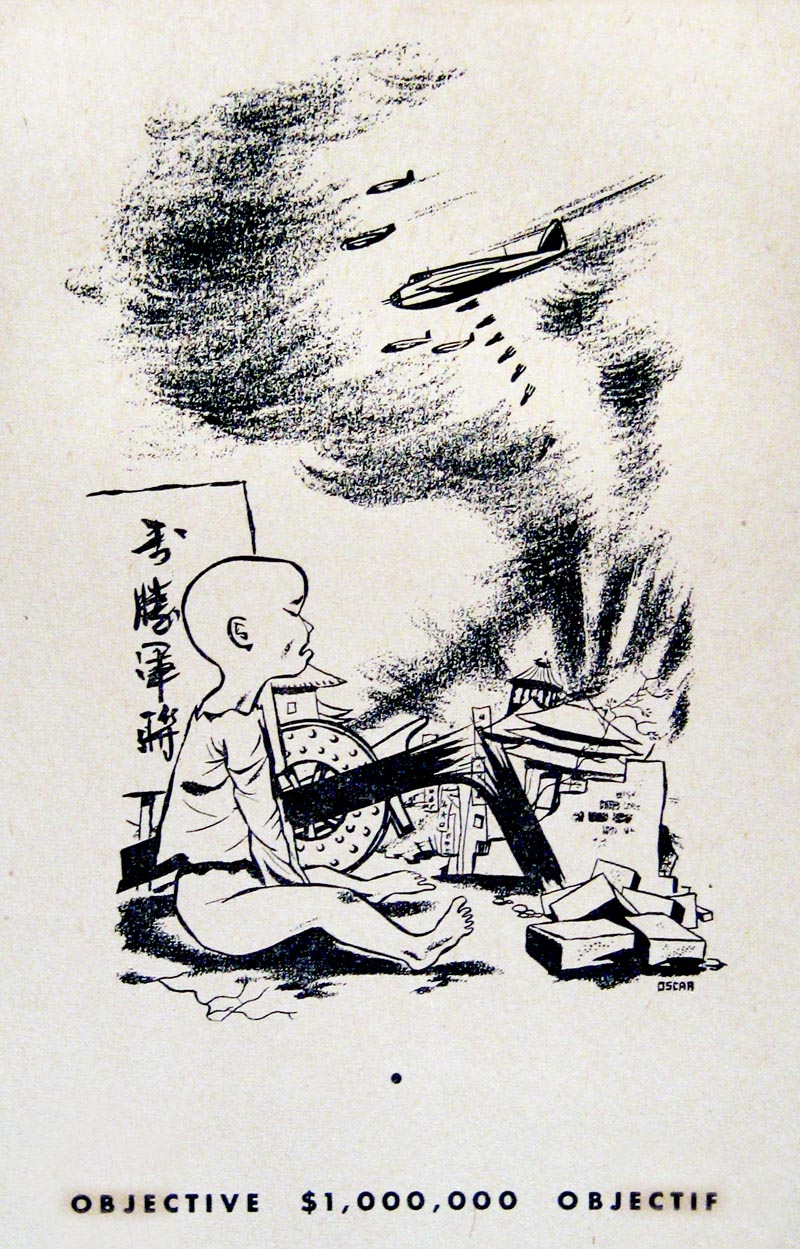
We don’t know where this image appeared. If you do, contact The Cahén Archives.
The broken tree recurs throughout Cahén’s later illustrations and fine art work, in connection with violence and tragedy.
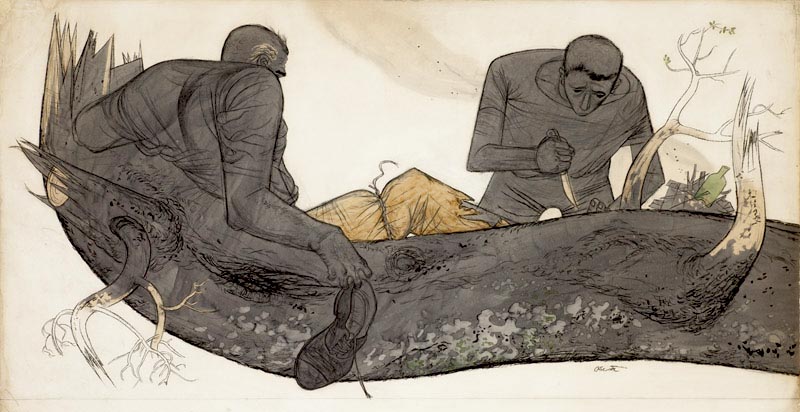

* Continued tomorrow...
* The first exhibition of Oscar Cahén’s illustration since his lifetime will be shown in New York at Illustration House in October 2011 (opening night Oct. 1). With Roger Reed, I have written a full colour catalogue with an essay and over 60 images. In this series of posts about Cahén, I will introduce him and feature some artwork that will not appear in the show, catalogue, or websites. The tearsheets and originals here are from Oscar Cahén’s estate, courtesy of his son Michael Cahén at The CahénArchives ~ Jaleen Grove
Great work and a big inspiration Leif.I believe Oscar died in an automobile accident on Yonge Street in Toronto while driving his Austin Healey..I could be mistaken.. but I remember talking to Will Davies about this years ago.
ReplyDeleteAt any rate,.. a tremendous talent that was cut far too short after surviving WWII.
wow, what a spectacular piece of art Cahen created in the room full of drunken soldiers and the bar maid. Truly an inspiration for today. Thanks for sharing!
ReplyDelete